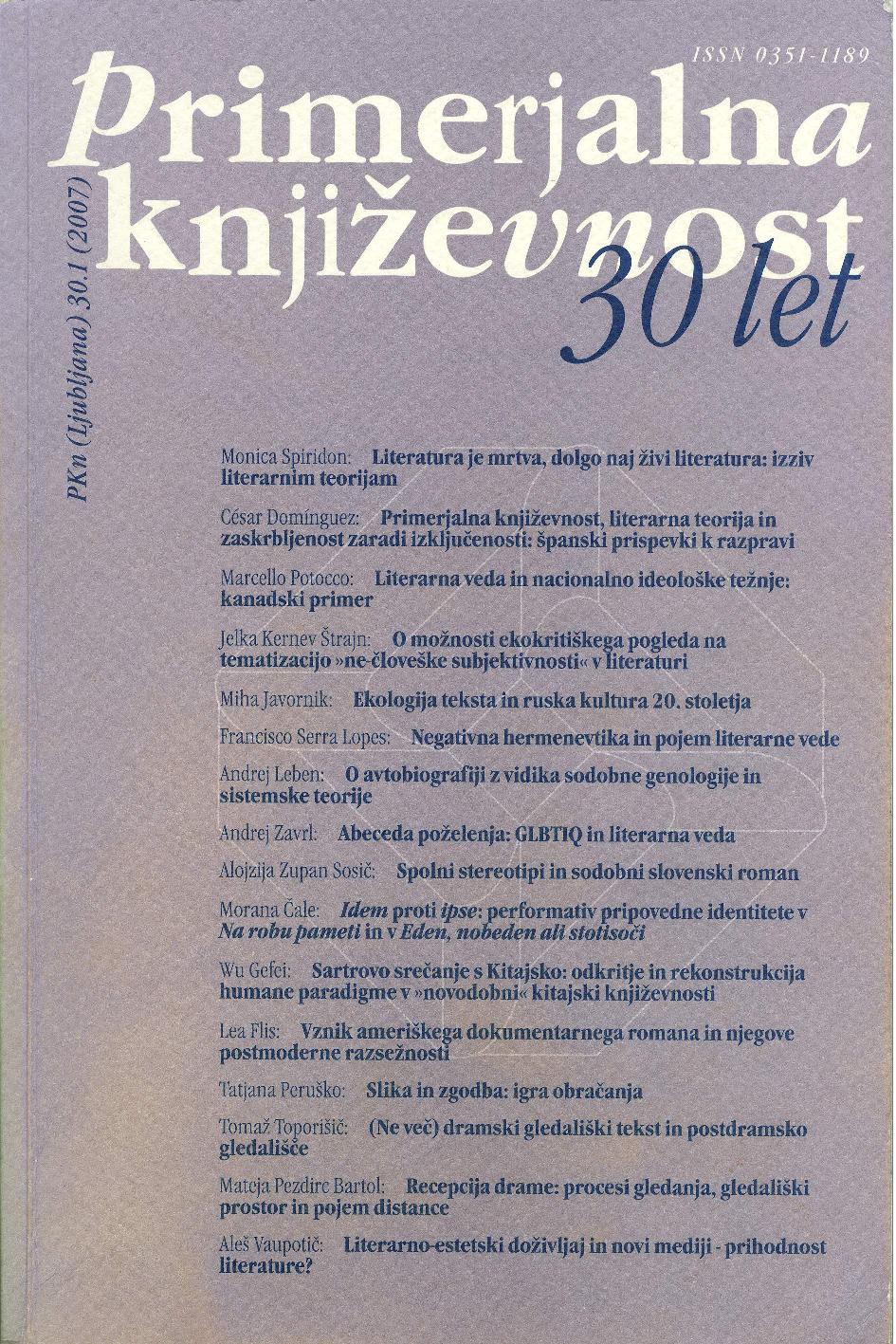Literary-Aesthetic Experience and the New Media: The Future of Literature?
Keywords:
literature and technology, literary science, aesthetic experience, new media, multimedia, cybertextAbstract
Software art, interactive drama, text-based computer games, browser art, blogs with literary ambitions, hypertext fiction, and interactive installations as literary experiments within conceptual art – these are only a few phenomena on the border between literary traditions and more recent computer-based means for textual communication. For literary criticism, the key issue is how the literary mode of mentally conquering the world resumes in a new context fundamentally open to a plethora of modes of discursive representation. In addition to the verbal medium, this also includes visual media, sound media, and video. The title refers to contact between two discourses: the literary one, as described by phenomenological literary criticism since Roman Ingarden, and new media discourse. A literary work of art can be explained as the artistic use of verbal communication. National languages are media that build literary-aesthetic experiences through acts of reading. In Ingarden’s use of the term (in contrast to Jakobson’s), literariness is therefore considered the differentia specifica of literary texts as opposed to non-literary ones. Ingarden’s example of the literary mode of communication on the border with other modes is the theater as a plurimedial discourse pointing to the theme at hand. On the other hand, there is the question of the opposite side of literary discourse. For example, one could use the term “digital literature,” but this paper employs (and scrutinizes) Lev Manovich’s more precisely defined notion of new media, which touches on the key aspects of contact between the new media and traditional arts, also including literature. The paper shows that the new media is not merely a new branch on the tree of arts, but that in the light of the new media the entire field of art practices changes – along with the human discursive orientation in the world. Espen J. Aarseth’s notions of cybertext and ergodic literature, as well as Peter Weibel’s writings on the fate of media after the algorithmic revolution – in the “postmedia condition” – provide the theoretical framework. The literary new media project Die Amme (1992–) by Peter Dittmer addresses the dilemma of literary discourse in the new media context.References
Aarseth, Espen J. Cybertext: Perspectives on Ergodic Literature. Baltimore: The Johns Hopkins UP, 1997.
Benjamin, Walter. »Umetnina v času, ko jo je mogoče tehnično reproducirati.« Izbrani spisi. Ljubljana: SH – Zavod za založniško dejavnost, 1998. 145–76.
Burckhardt, Martin. »Von milchweigernden Ammen, subversiven Kanninchen und anderen Naturwidrigkeiten (It's Art, Stupid!).« Im Buchstabenfeld. 117–30.
Die algorithmische Revolution. Kustosi Peter Weibel, Dominika Szope, Katrin Kaschadt, Margit Rosen, Sabine Himmelsbach. Karlsruhe: ZKM, 2004. URL: http://www01.zkm.de/algorithmische-revolution/, 23. 2. 2007.
Dittmer, Peter. Schalten und Walten [Die Amme]. URL: http://www.dieamme.de/, 23. 2. 2007.
Enzensberger, Hans Magnus. Einladung zu einem Poesie-Automaten. Frankfurt ob Majni: Suhrkamp, 2000. URL: http://jacketmagazine.com/17/enz-robot.html, 1. 5. 2007.
– – –. »Zum Projekt eines Poesie-Automaten.« Im Buchstabenfeld. 137–41.
Flusser, Vilém. Digitalni videz. Ljubljana: Študentska založba, 2000.
Foucault, Michel. Arheologija vednosti. Ljubljana: Studia humanitatis, 2001.
Ingarden, Roman. Literarna umetnina. Ljubljana: ŠKUC FF, 1990.
Juvan, Marko. Vezi besedila. Ljubljana: Literarno-umetniško društvo Literatura, 2000.
Kos, Janko. Očrt literarne teorije. Ljubljana: DZS, 21994.
Landow, George P. Hypertext: The Convergence of Contemporary Critical Theory and Technology. Baltimore: Johns Hopkins UP, 1992.
Manovich, Lev. The Language of New Media. Cambridge, Mass: MIT Press, 2001.
Nelson, Theodor. Literary Machines. Swarthmore, Pa: samozaložba, 1981.
Poesie-Automat. URL: http://poesieautomat.com/, 23. 2. 2007.
Ryan, Marie-Laure. »Narrative and the Split Condition of Digital Textuality.« URL: http://www.brown.edu/Research/dichtung-digital/2005/1/Ryan/, 17. 4. 2007.
– – –. »Peeling the Onion: Layers of Interactivity in Digital Narrative Texts.« URL: http://lamar.colostate.edu/~pwryan/onion.htm, 16. 4. 2007.
Strehovec, Janez. Tehnokultura, kultura tehna. Ljubljana: ŠOU, Študentska založba, 1998.
– – –. Umetnost interneta. Ljubljana: Študentska založba, 2003.
Vaupotič, Aleš. »Narrative and New Media – Realistic Issues.« 2005. URL: http://www2.arnes.si/~avaupo2/files/NNM_21.doc, 1. 5. 2007.
– – –. »On the Problem of Historical Research in Humanities: Michel Foucault and Mikhail Bakhtin.« Logos 2.3 (jesen 2002). URL: http://www.kud-logos.si/LOGOS-3-02/bakhtinfoucault.htm, 28. 8. 2006.
Weibel, Peter. »Buchstaben und Bauten: Zur Grammatik der Gegenstande.« Im Buchstabenfeld. 323–8.
– – –. »Die Algorithmische Revolution. Zur Geschichte der interaktiven Kunst.« URL: http://www01.zkm.de/algorithmische-revolution/, 23. 2. 2007.
– – –. »Die postmediale Kondition.« Die Postmediale Kondition. Ur. Elisabeth Fiedler, Christa Steinle, Peter Weibel. Gradec: Neue Galerie, 2005. Druga polovica razprave tudi na URL: http://www.neuegalerie.steiermark.at/05/postmediale/konzept.html, 23. 2. 2007.
– – –. »Einleitung.« Im Buchstabenfeld. 11–65.
– – –, ur. Im Buchstabenfeld: Die Zukunft der Literatur. Gradec: Literaturverlag Droschl, 2001.
– – –. »Zur Rechtfertigung der hipotetischen Natur der Kunst und der Nicht-Identität in der Objektwelt.« Im Buchstabenfeld. 403–13.


